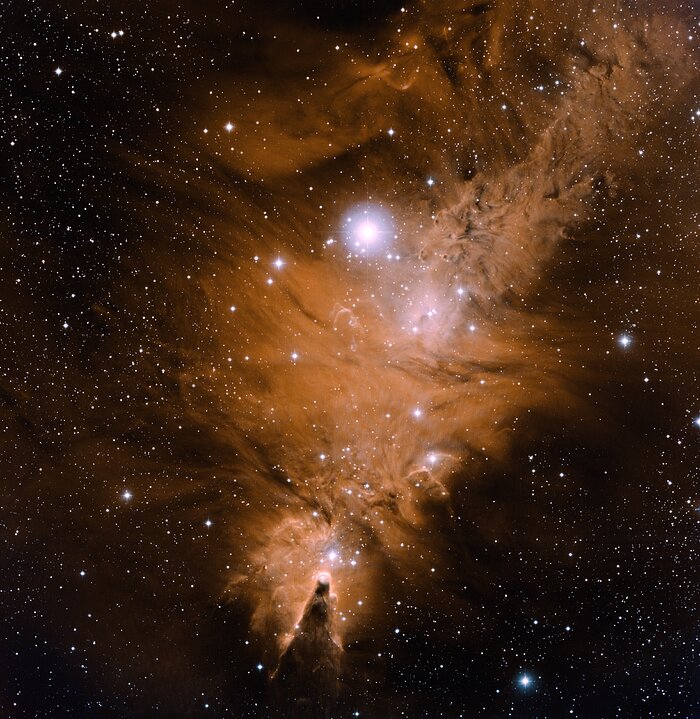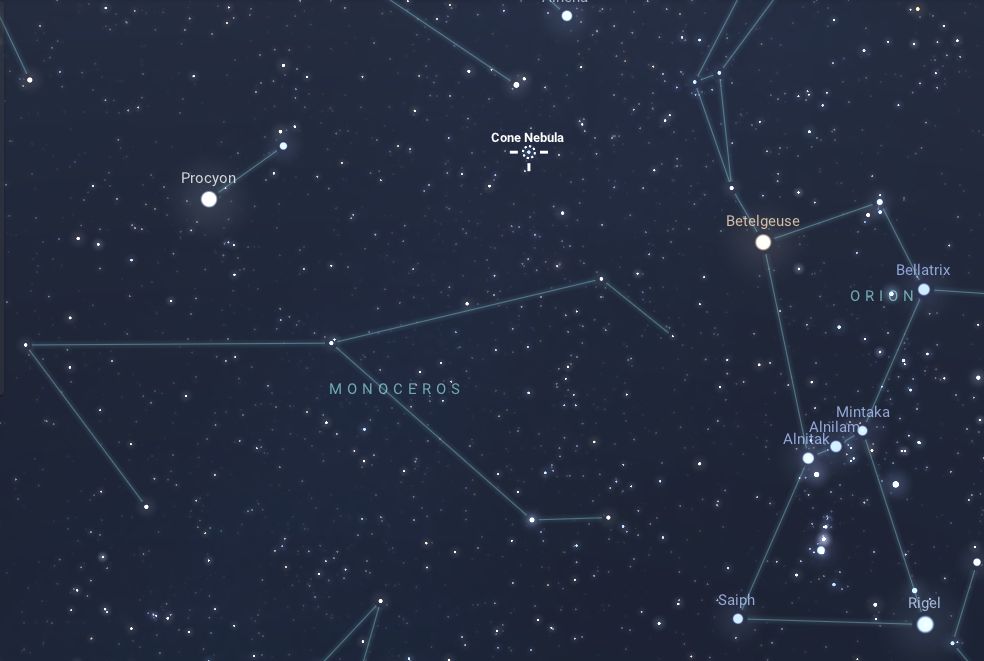NGC 2264, often referred to as the Christmas Tree Cluster, is a young open star cluster located in the Cone Nebula in the constellation Monoceros, approximately 2,500 light-years away. This visually striking cluster is home to several hundred stars and includes notable features such as the Cone Nebula and the Christmas Tree Cluster itself, making it a captivating object of study for astronomers and a popular target for stargazers.
First catalogued by French astronomer Pierre Méchain in 1781, NGC 2264 was later included in the New General Catalogue (NGC) compiled by John Louis Emil Dreyer in 1888. The cluster is most famous for its distinct shape and its role in the ongoing process of star formation.
Physical Characteristics
NGC 2264 is a relatively young open star cluster, containing several hundred stars that formed from the same molecular cloud—a vast, cold, dense cloud of gas and dust. Over time, sections of this cloud collapsed under gravity, creating dense pockets where new stars, predominantly blue and hot, began to form. The stars in this cluster are relatively young, with an estimated age of about 3 million years. The cluster is also closely associated with the Cone Nebula, a large dark nebula within NGC 2264.
The Cone Nebula (NGC 2264.5) is a striking dark nebula shaped like a cone, created by dense clouds of dust and gas that obscure light from stars behind it. This nebula is illuminated by nearby hot blue stars, including those in the Christmas Tree Cluster, giving it a faint glow and enhancing the visual contrast with the darker surrounding material. The stars in NGC 2264 emit ultraviolet radiation, which ionizes the surrounding gas, contributing to the nebula’s faint luminosity.

The Christmas Tree Cluster is a small grouping of stars within NGC 2264 that forms a triangular shape, resembling a Christmas tree. This arrangement of stars is best seen through a telescope. The brightest star, S Monocerotis, serves as the “trunk” of the tree, while the remaining stars form the “branches.” The cluster’s shape, combined with the glowing nebula, gives it a unique and festive appearance, making it one of the most visually captivating regions for astronomers to observe.
Observation
With an apparent magnitude of around 3.9, NGC 2264 is visible to the naked eye under dark sky conditions, though its most distinctive feature—the wedge-shaped Christmas tree—is best observed through a small telescope. Binoculars also enhance its visibility, especially in areas with minimal light pollution.
NGC 2264 is most easily observed from the Northern Hemisphere during the winter months, from December to February, when Monoceros is well-placed in the evening sky. It can also be viewed in the Southern Hemisphere during the summer months, where it appears higher in the sky. Amateur astronomers and astrophotographers often use star charts or astronomy apps to locate it, given its striking appearance and the beauty of the surrounding nebula.

Overall, NGC 2264, the Christmas Tree Cluster, is a fascinating and visually stunning object located in the constellation Monoceros. Its association with the Cone Nebula and its unique shape make it a favourite among astronomers and stargazers alike, offering a dynamic example of star formation and a striking view for those fortunate enough to observe it.



